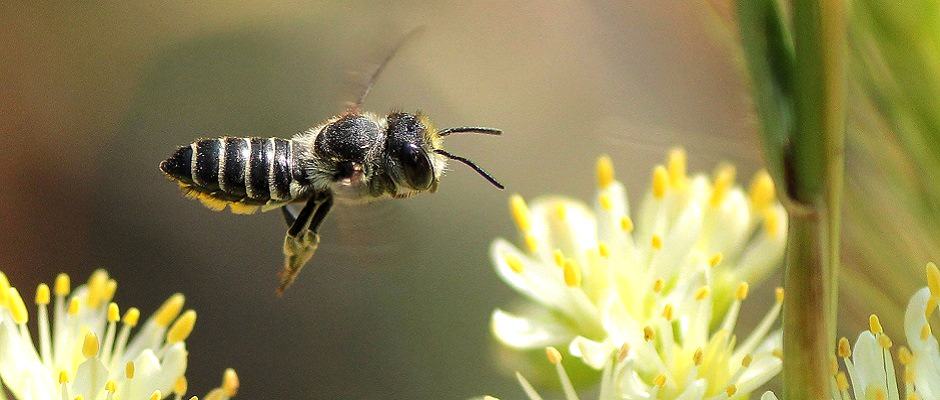Share this article
The good bacteria are in the flowers
Flowers might be a hot spot for transmission of bacteria to bees, but that’s not necessarily a bad thing, according to recent research.
As part of a study published in the journal Microbial Ecology, researchers examined microbiomes—or the microorganisms in a particular environment—of wild bees to determine whether flowers are a source of bacteria for bees and how those bacteria affect the insects’ health.
“The microbiome in general is a really hot research topic,” said Quinn McFrederick, an assistant professor in the entomology department at the University of California-Riverside and lead author of the study. “There was recently a large project on human microbiomes and how microbes could affect obesity and resistance to disease. This is what got me interested in studying microbiomes of bees.”
McFrederick and his team sequenced bacteria on seven species of wild flowers as well as seven species of bees at two meadows near Austin, Texas. They used fine mesh bags to cover the flowers before they bloomed to keep bees from pollinating them. This gave them an accurate picture of the bacteria that were found on pre-pollinated flowers. Once the flowers opened up, the researchers sampled them and examined the bacteria. Then, they looked at the bacteria found on three genera of bees—Megachile, Osmia and Lithurgus—all of which nest in wood. They discovered that the same bacteria were found on both the bees and flowers.
“This suggests the same bacteria shows up whether bees visit the flowers or not,” McFrederick said. According to McFrederick, these bacteria could be airborne or could have possibly moved through very small insects that could have gotten through the small bags. “But it is clear that visitation by a bee is not necessary for the bacteria to show up,” he said, adding that the flowers might be spreading those bacteria to the pollinating bees.
But that’s not necessarily a bad thing, McFrederick says. In fact, research suggests that the lactobacilli species that was especially prevalent on the flowers and bees could actually be good for the wild bee species. Lactobacilli—typically used to protect fermented foods such as sauerkraut, sourdough bread, beer and wine—tend to change their environment, making it more acidic which inhibits the growth of other microbes that spoil foods. For bees, that means that the bacteria might inhibit the growth of other bacteria that might harm them. As a result, McFrederick suggests, “We may be able to increase those good bacteria by using flowers and that could help bee populations.”
While researchers are still working to understand the full impact of bacteria on bee health, McFrederick stresses the need to conserve wild bees; especially since honeybees that were brought in from Europe and are exclusively used to pollinate U.S. crops face many threats and are in decline. “I like to think of [wild bees] as an insurance policy,” he said, calling for additional food and nesting sites to be set aside for the bees. “Wild pollinators are another source of pollination and we want to protect those as well.”
Header Image: A bee in the Megachile genus flies among flowers that it plans to pollinate. ©Alan C








